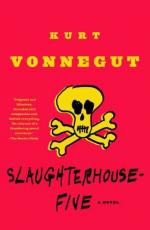|
This section contains 6,835 words (approx. 23 pages at 300 words per page) |

|
SOURCE: "From Catch-22 to Slaughterhouse V: The Decline of the Political Mode," in South Atlantic Quarterly, Vol. 78, No. 1, Winter, 1979, pp. 17-33.
In the following essay, Hartshorne examines the novels Catch-22 and Slaughterhouse V as fables that may shed light on cultural and political phenomena of the 1960s.
Recently several writers have pointed out the risks involved in the use of imaginative literature as a tool for the investigation of American society, culture, and history. Bruce Kuklick, Seymour Katz, R. Gordon Kelly, and Cecil Tate have all questioned the assumptions and practices of what Leo Marx has called the "humanist" approach to American Studies. They have argued that the humanist method usually rests upon unproven assumptions about the meaning and significance of particular works to contemporary audiences, that it does not offer precise evidence concerning the relationship between the writer and his readers, that it ignores the fundamental theoretical...
|
This section contains 6,835 words (approx. 23 pages at 300 words per page) |

|


